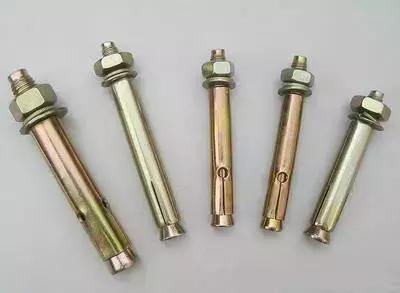
Privacy statement: Your privacy is very important to Us. Our company promises not to disclose your personal information to any external company with out your explicit permission.
Explosive bolts, when the layman heard it, thought it was like a bomb, the bolt that would explode! And the industry will smile a little: please listen to me.
The debris-free explosion bolts, referred to as explosion bolts, are mostly used for multi-point connection separation surfaces. Each blast bolt is shaped like a normal bolt with internal explosives and igniters. When separated, the explosive is detonated, the shear lock is sheared or the groove is broken along the bolt, and the two separate bodies are unlocked. There are many types of explosive bolts, mainly slotted, shear pin type, steel ball type explosion bolts and non-polluting explosion bolts. The advantage of this device is that it has large carrying capacity, simple structure, reliable operation and convenient use. The downside is that multiple bolts are often required to ensure that all bolts are difficult to disconnect at the same time. In addition, it is necessary to ensure that the wreckage does not damage the surrounding structure and equipment when the bolt is disconnected, so the protective structure should be set accordingly if necessary.
Shear pin type explosion bolt

Explosive bolts, I believe that most people are not a strange name. Its most famous use is one of the key components of the launch vehicle's booster separation device. NASA conducted a thorough inspection of the space shuttle during the launch preparations for the Space Shuttle Atlantis in October this year due to the fact that the ignition of the separation and explosion bolts of some solid propellant rockets was not functioning properly.
In the aeronautical structure, the explosive bolt is the same as the seat rocket catapult equipped with the fighter. It is a typical gas-driven device (CARTRIDGE-ACTUATED DEVICES, CAD for short). In addition to its applications in aerospace, explosive bolts are also widely used in aviation. A well-known example is Russia's use of explosive bolts on the fixed connection of helicopter rotors (Card-50), which makes the helicopter's catapult rescue possible.
Most explosion bolts have the same appearance as ordinary bolts, except that a cavity is designed inside the bolt to accommodate a certain number of detonating charges and detonators. The igniting device ignites the charge after receiving the action signal, and cuts the entire bolt into 2-3 parts. This may sound simple, but there are many difficulties in designing and manufacturing explosive bolts. The first is that the explosive bolts must be loaded to ensure adequate mechanical strength while also ensuring a very reliable explosion separation.

There must be no or very few explosive debris when the explosion is separated. In order to ensure this, many explosive bolts press the stress grooves on the bolts, and the bolts break from these stress grooves when they are exploded. If properly designed, the blast bolt can be completely free of explosive debris and the geometry of the bolt break band is very regular. At the same time, there are strict requirements for the reaction time of the explosion bolt. Due to the special working environment, the explosion bolts must have a relatively large temperature range. Generally, it is required to work reliably in the temperature range of tens of degrees to zero on the near Baidu. Because it is used in aerospace vehicles, there are certain requirements for the weight and corrosion resistance of the explosion bolts. Commonly used matrix manufacturing materials are various alloy steels.
There are many types of explosive bolts. According to the load, it is several hundred kilograms small, and the large one can reach more than 200 tons. According to the ignition mode, it can be divided into electric excitation, mechanical excitation, pressure excitation, hydraulic excitation and the like. In addition to the mechanical performance of the general bolt, the performance index of the explosion bolt includes the igniting sensitivity, the maximum non-firing current and the minimum full igniting current (for the electric igniting bolt), the action time, the operating temperature range, and the like.
In the aerospace industry, in order to overcome the disadvantages of high cost of explosive bolts, large explosion impact, and high gas release, the technicians have developed a non-explosive self-removing bolt made of titanium-nickel memory alloy. This self-removing bolt is also repeatable. The advantages of using. But it also has very obvious shortcomings, and the reaction time is usually tens to hundreds of times longer than the explosion bolt. It is certain that in future aerospace, explosive bolts will still play an extremely important role.
June 09, 2023
Mail a questo fornitore

Privacy statement: Your privacy is very important to Us. Our company promises not to disclose your personal information to any external company with out your explicit permission.

Fill in more information so that we can get in touch with you faster
Privacy statement: Your privacy is very important to Us. Our company promises not to disclose your personal information to any external company with out your explicit permission.